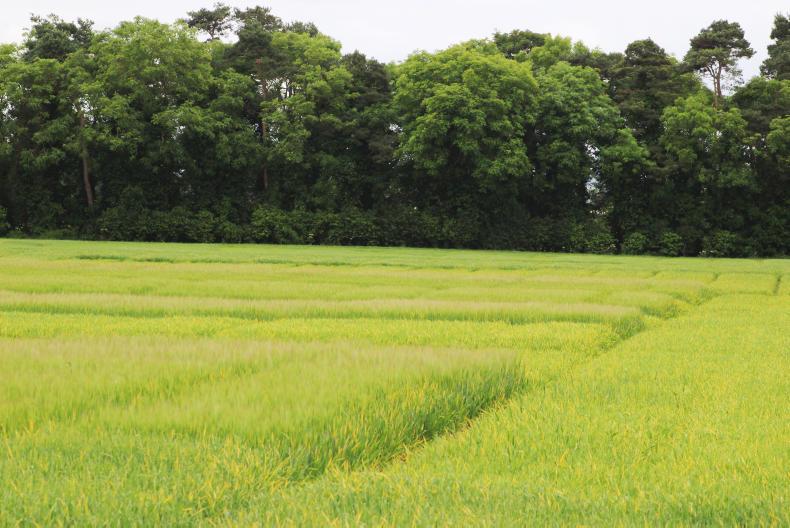Better weather: With wheat crops in various stages of flowering and spring barley heading to flowering, these few fine, warm and bright days are just what the doctor ordered. And it’s not too warm for winter barely either, as the first crops begin to turn in parts of the country. We look forward with optimism!
Crows have begun to attack winter barley, so take all sensible precautions along crop edges and around lodged patches.
Yellow leaves: This is a very common topic of conversation at the moment. In my opinion, there are two main factors at play, but I agree that most of the problems appear to be virus related. Many crops have only one yellow leaf and this is commonly the second last leaf. Many such symptoms tested positive for BYDV in the past, but I still wonder if we are seeing variants of this virus which produce different symptoms and perhaps have varying relevance.
Many are questioning autumn control measures against the appearance of these yellow leaves in winter crops. Where only the second last is yellow, virus infection can only have taken place during or after leaf emergence, ie April/May.
In general, autumn BYDV infection impacts on the whole stem, with every leaf having yellow tips. Some of what we see this year have totally yellow leaves, while others are intermittently blotched. In this regard, I have little doubt that some of the yellowing was a consequence of chemical reaction, generally associated with cold spells. Some discolouration in spring crops is much more likely to be chemical related, but then there is definitely a lot of BYDV in some spring crops, barley and oats in particular.
There are also quite a lot of yellow leaves in spring barley crops. It would seem that some varieties are worse than others, but it is difficult to be adamant as to which ones are which. Again, many crops have plants with only one or two upper leaves yellow, with the lower leaves appearing healthy.
The general consensus is that plants showing overall infection are more likely to carry serious yield consequence. But it is not possible to be dogmatic about this comment.
Final sprays: Most wheat crops are now likely to have received their final fungicides thanks to the past few warm dry days. Spring barley ear emergence has been held back by the recent cold weather, so many crops are only coming to awns emerging and earing-out stage. It is critical that final sprays include cover for rust and ramularia and be applied just as the awns are emerging to help secure spray penetration. With so many fluctuations in recent weather, it seems inevitable that spring crops will be equally at risk from ramularia as winter crops are.
Include a contact like Bravo or Phoenix for ramularia control with products like Siltra, Ceriax, Bontima, Elatus Era, Fandango or other mixtures.
Crops and Spreaders: It is very important that growers and others in the sector support this event well next week, as the sector needs to have a big show of numbers.






 This is a subscriber-only article
This is a subscriber-only article









SHARING OPTIONS: